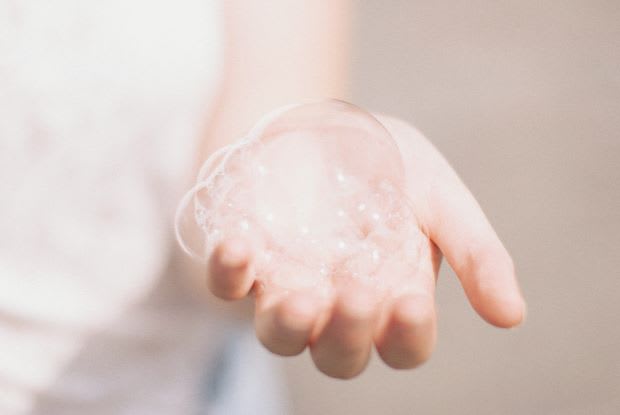Table of Contents
I. Good Bacteria vs. Bad Bacteria
b. Handling Coughing and Wounds
III. What to do if You Suspect an Infection
IV. Taking Antibiotics When Needed
Good Bacteria vs. Bad Bacteria
Bacteria gets a bad rep, but many people don’t realize that not all bacteria cause infections. Some bacteria help to balance the immune system. These good bacteria help break down carbohydrates and protect cells in the intestines from pathogens. Good bacteria also contribute to repairing damaged tissue and prevent bad bacteria from growing out of control.
When there are not enough good bacteria in your body, or if your immune system is weakened, bad bacteria may start to grow. This can result in conditions like impetigo, folliculitis, pneumonia, and urinary tract infections (UTIs). If you are diagnosed with a bacteria-related condition, you will likely be prescribed antibiotics to kill the bacteria. Prescription antibiotics for UTIs like Keflex, Levaquin (levofloxacin), and amoxicillin are effective at wiping out bacteria, but it is always best to prevent an infection before it takes place. Read on for tips on how to reduce your risk of developing bacterial infections. [1]
Hygiene Guidelines
Bacteria are tiny organisms and move easily from person to person. They enter the body through openings like the nose, mouth, ears, urinary tract, and anus. They can also enter the body through open wounds or insect bites. Good hygiene is the first line of defense against these invading organisms. Following good personal hygiene practices can prevent infections and reduce the risk of spreading bad bacteria to others.
Everyone knows the importance of handwashing, but not many people wash their hands properly. Most people will know to wash their hands after tasks like using the bathroom or gardening and before eating a meal. However, it is just as important to wash your hands after blowing your nose, sneezing, or coughing. You should also wash your hands after visiting a sick person or feeding your pet. To wash your hands properly, wet your hands, lather your hands with soap, and rub thoroughly. Ensure you cover the palms, the wrists, and the backs of your hands. Make sure to clean under your nails and between your fingers. Finally, rinse with water and dry your hands with a clean towel. [2] The best way to handle coughing and sneezing is to cover it. You will want to cough or sneeze into a tissue if one is available. If not, cough or sneeze into your elbow instead of your hands to minimize the risk of spreading bacteria. As mentioned above, wash your hands as soon as possible after coughing or sneezing. If you get a small cut that leaves an open wound, gently wash the affected area and apply a bandage. Your body will naturally clot the blood by the wound to prevent bleeding and bacteria from entering, but a bandage can serve as an extra layer of protection to ensure any harmful substances stay on the outside. When your wound is healing, try not to pick at any scabs or blemishes. If the cut is severe, or if the wound resulted from an animal scratch or bite, you may need it examined by your doctor. [2] If you live with your family, a spouse, or a significant other, it can be hard not to share various household items. But bacteria are highly contagious, and sharing things like dishes, eating utensils, glasses, toothbrushes, or towels can cause an infectious outbreak. To practice good hygiene, avoid direct contact with any personal items used by others. [2] If you come into contact with an animal bite, or if you experience symptoms of an infection, you may need medical care. Symptoms that may indicate a bacterial infection include: It is always better to prevent rather than treat, but if a bacterial infection has already developed, medical intervention may be needed to prevent serious complications. Untreated infections can result in a condition called sepsis, characterized by the infection spreading into the bloodstream. Sepsis can have potentially life-threatening outcomes. Your doctor can evaluate the seriousness of your infection and determine if antibiotics like Keflex (cephalexin), Levaquin (levofloxacin), retapamulin cream, or amoxicillin can relieve symptoms. Understandably, people are afraid of bacteria, but this fear has historically been counterproductive in some cases. Research shows that eradicating all bacteria may contribute to more infections. This is because killing good bacteria promotes the growth of bad bacteria, so taking antibiotics unnecessarily can do more harm than good. If you use antibiotics only when needed, you can prevent more serious infections down the road. [1] The content in this article is intended for informational purposes only. This website does not provide medical advice. In all circumstances, you should always seek the advice of your physician and/or other qualified health professionals(s) for drug, medical condition, or treatment advice. The content provided on this website is not a substitute for professional medical advice, diagnosis, or treatment.
a. Handwashing
b. Handling Coughing and Wounds

c. Sharing Personal Items
What to do if You Suspect an Infection

Taking Antibiotics When Needed
